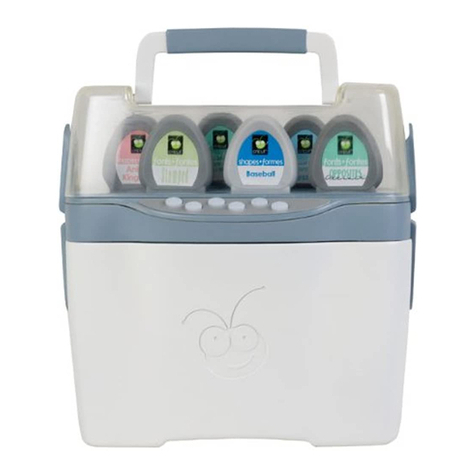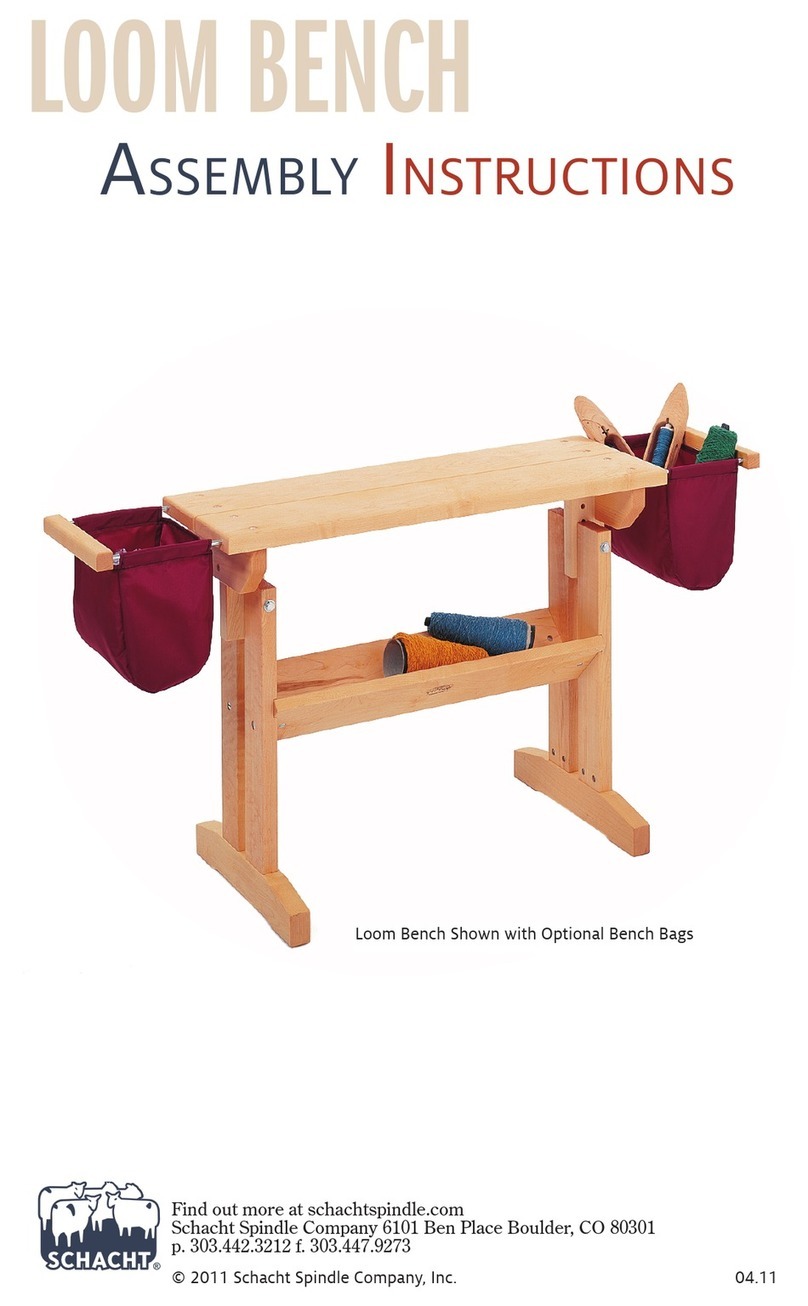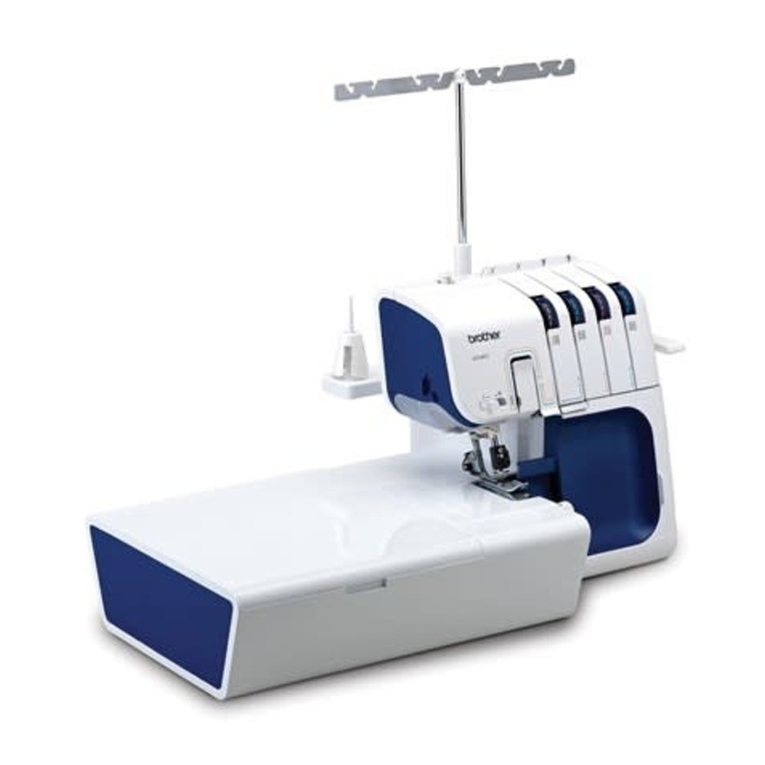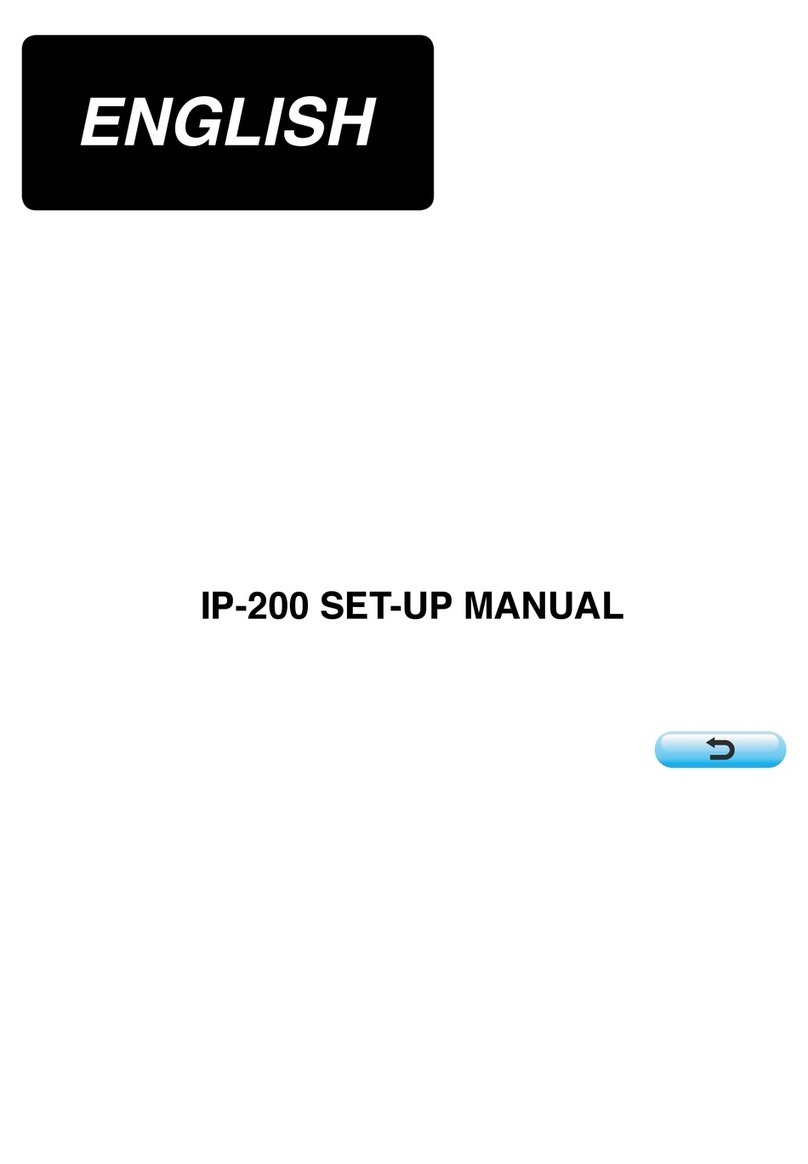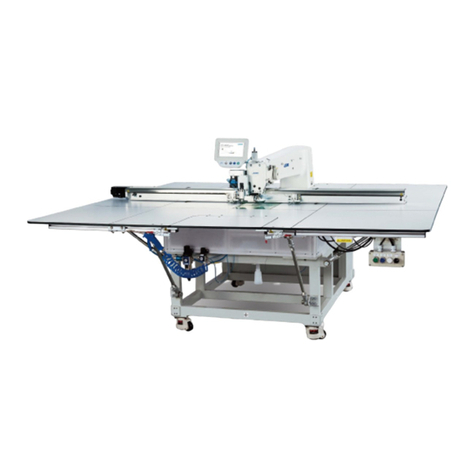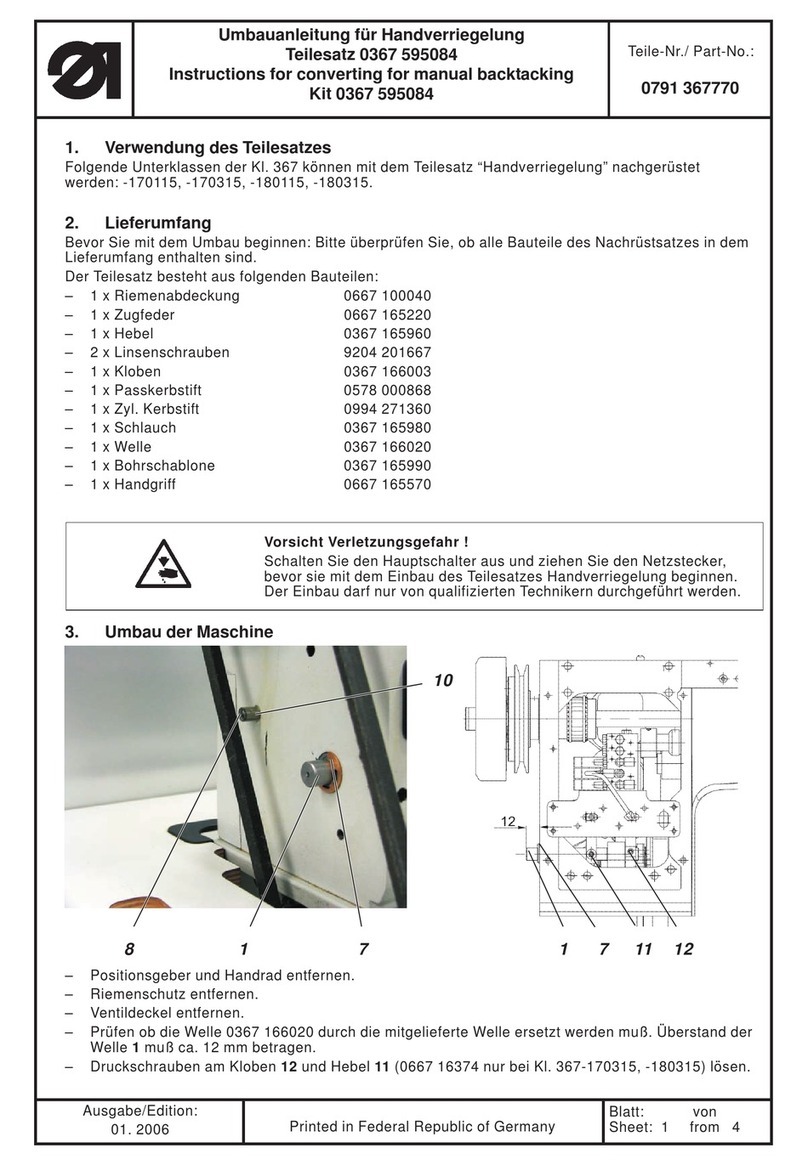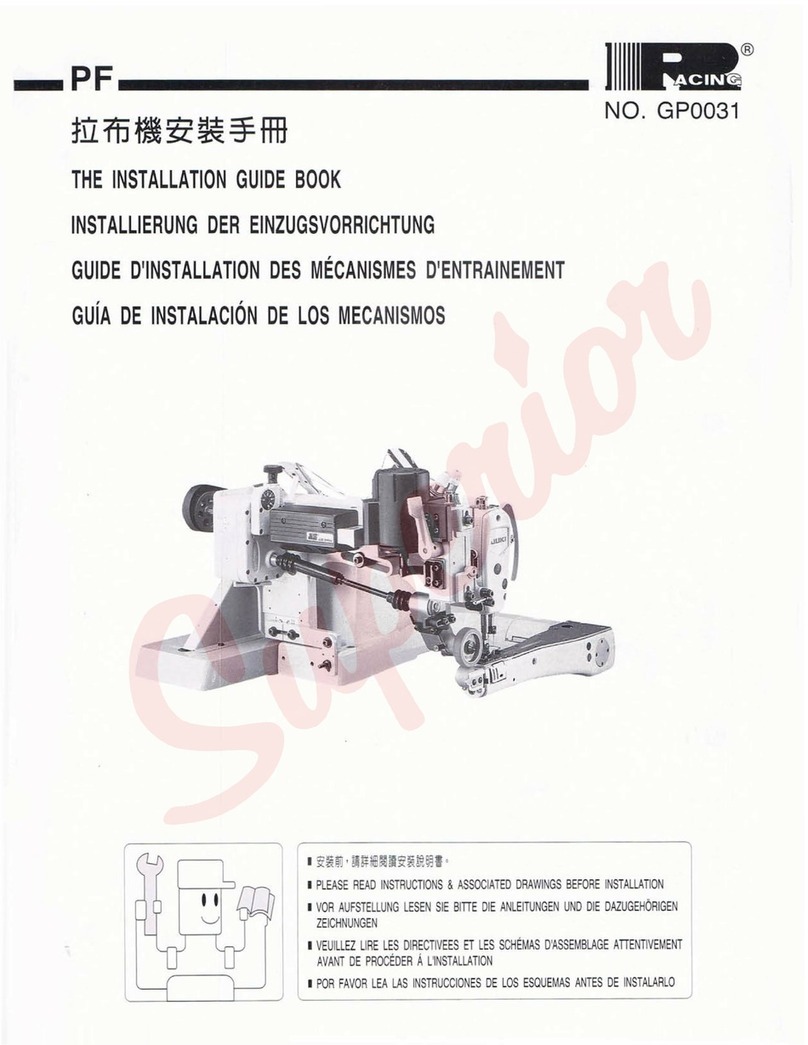Sewing Sarah 32 PIECE PRESSER SET User manual

32 PIECE
PRESSER SET
USER GUIDE

Sei Mie Presser F Se User Guide
CS
2
3
I W is i e
II H e e s sei ie
III esrii e diere ee
4
4
4
5
7
7
8
ringe oot or ooper oot
ouble elting oot or Piping oot
raiding oot or Couching oot or Cording oot
8
9
10
10
10
11
11
11
12
12
13
13
13
14
15
15
16
16
17
Pearl Piping ooteading oot
roove Pintuck oot
nvisible ipper oot
ole Cording oot
ound olled em oot olled emmer and
olled em oot arrow emmer
Teflon igag oot
pen oe mbroidery oot
arge pening Presser oot
Cording oot
uilting oot
Straight Stitch oot
uilting oot with guide
vercast oot
Satin Stitch oot
dge oining oot or Stitchintheitch oot
Stitch uide oot
lind Stitch ootlind em oot
Shirring ootathering oot
oller oot
arning oot
Adustable ias inding oot
arning oot
Adustable ipper oot
nit oot or ricot oot
17
1

Sei Mie Presser F Se User Guide
I W is i e
. ringe oot
. ouble elting oot
. raiding oot
. Pearl Piping oot
. roove Pintuck .
. roove Pintuck .
. nvisible ipper oot
. ole Cording oot
. mm ound olled
em oot
. Teflon ig ag oot
. pen oe mbroid. .
. arge pening oot
. ole Cording oot
. uilting oot
. Straight Stitch oot
. uilting oot
. vercast oot
. Satin Stitch oot
. ole Cording oot
. dge oining oot
. Stitch uide oot
. lind Stitch oot
. Shirring oot
. mm olled em
oot
. mm olled em oot
. mm ound olled em
oot
. oller oot
. arning oot ow Shank
. ias ape inder .
. arning oot
. ipper oot ow Shank
. nit oot
2

Sei Mie Presser F Se User Guide
II. H e e s sei ie
IEO EMO Changing our Sewing achine eet click to view
emoving a presser foot
aise the needle and the presser foot lever.
he way to remove the presser foot depends on the brand of machine you have. Sometimes it ust
snaps off but with most machines you have to push a button or lever on the presser foot holder.
Consult your machines user manual to find the way to remove the presser foot.
Attaching a presser foot
ower the presser foot lever so that the presser foot pin snaps into the shank in the presser
foot holder . ou may have to try a couple of times before it snaps in. f your presser foot holder
has a lever or button for release it may be necessary to pullpress it to facilitate snapon.
he presser foot holder can look different on your machine this picture is from a rother sewing
machine.
3

Sei Mie Presser F Se User Guide
III esrii e diere ee
ringe oot or ooper oot
The fringe foot (or “looper foot”) is a presser foot that allows quilters and other
textile manufacturers to add decorative accents to completed products. The fringe
foot adds a zig-zag stitch over the center raised bar. With more thread added to
each stitch, a straight line of stitches made with the fringe foot creates a row of
raised loops. A narrow zig-zag of loops sewn with a short stitch length produces
lines, curves, and other shapes to create decorative highlights.
For example, a floral pillow cover can be finished by adding a textured outline
made with zig-zag loop stitches. Add texture and create a chenille effect by
juxtaposing several rows of wider stitching. Similarly, a plain purse can be
transformed to a chic design by using the fringe foot to add texturing, which can be
applied to any type of design. Depending on the stitches available on your
machine, these looped effects can be enhanced to produce rows of eyelash fringes
or a faux fagoting stitch.
IEO EMO ow o se a ringe oot click link to viw
OG POST un ays to se a ringe Sewing oot click link to view
ouble elting oot or Piping oot
The double welting/double piping foot is a presser foot designed specifically for
creating single or double piping or welting. The two grooves on the bottom of this
presser foot provide room to allow one or two lines of piping to pass underneath. The
double piping foot accepts 4mm to 6mm piping or cording and has a maximum stitch
width of 4mm.
4

Sei Mie Presser F Se User Guide
Isruis
Piping and welting are often used to finish home décor
projects. This presser foot can be used to create many
effects, including making single- or double-piping using
bias tape and cord; attaching couch cord or piping;
and attaching covered single- or double-piping. For
example, when working with furniture pieces, double
welting cord used with upholstery fabric can be glued
over the exposed staples on the front of a sofa or chair.
To create a tailored appearance, use narrow, flexible
piping to cover the finishing seams of your project.
Topstitching double piping can cover seams or highlight
fabric designs, and double welting cord sewn
underneath fabric creates welted texture to enhance
finished products.
raiding oot or Couching oot or Cording oot
The braiding foot is a presser foot designed to attach braiding, cord, rat tail, or
other decorative enhancements. The braiding foot consists of an adjustable plate
with a rectangular hole in the middle centered above the “V” of the foot. There is
a depressed groove on the leading edge. To use the braiding foot, feed the trim
through this opening and under the foot. As you sew, the trim will move
automatically through the foot, so you can apply trim for any purpose your
project requires. Traditional embellishments like braiding are hand-sewn; using
the braiding foot can help you more quickly and easily give your products an
heirloom appearance.
Use the braiding foot to attach trim to a variety of handcrafts, including garments, wall hangings, quilts, upholstery, or
any other project that could benefit from a final design finish. Braids and trims can be used as applique borders, seam
covers, or decorative fabric finishes.
IEO EMO Add dimension with the braiding foot click to view
Geer isruis
. Select a straight stitch or a igag stitch. ost of the
time you will want to use a igag stitch.
. Place the width of the igag ust wide enough to
clear the braid cord or elastic that you are using.
. oosen the screw on the left of the foot to allow you
to move the adustable plate forward and back to
accommodate varying widths of braid cord or elastic.
. Snug the plate close to the braid that you are
applying to help guide the braid. et the braid feed in
as you guide the fabric on the transferred design.

Sei Mie Presser F Se User Guide
Isruis r ui esi
. hread the elastic through the hole on the braiding
foot from the top and under the back of the foot. ove
the guide by loosening the screw and snugging it up to
the elastic but allowing the elastic to slide through
freely.
. Select the overcast stitch adusting the width to cover
the elastic.
. egin sewing letting the elastic slide through the foot
as you sew.
. Pull the elastic up to the degree of gathers as desired.
the elastic should slide easily in the thread casing.
Isruis r eri i esi
. ark the placement of the elastic.
. eed the elastic through the hole on the front of
the foot and under the back. Slide the metal guide
around the elastic and tighten the screw. he elastic
should be able to slide easily through the hole.
. Select the appropriate tape attaching stitch on
your machine. ower the needle and take a few
stitches to hold the elastic in place.
. As you start sewing stretch the elastic in front of
the foot. he fabric will begin to gather behind.
Isruis r ris i i eedes
. Position the ribbon or trim in the spot desired. Select
the twin needle width desired.
. hread the ribbon or trim through the braiding foot
and tighten the screw.

Sei Mie Presser F Se User Guide
Isruis r sseeerie
. raw your design on your fabric first.
. ack the fabric with tearaway stabilier.
. hread the soutache cord through the hole on the
front of the foot and under the back. ove the metal
slide close around the trim.
. ower the needle into the center of the trim and
begin sewing.
. As you sew curves do not pull the trim too tight as
you sew.
. e sure to keep the needle in the center of the trim.
se your presser foot lifter to pivot as you sew.
Pearl Piping ooteading oot
The beading foot is a presser foot designed to attach round trim, such as
strings of pearl beads or piping up to ¼” thick. A tunnel that runs under the
beading foot allows the trim to pass securely underneath while sewing, while
the clear plastic design allows maximum visibility. If your machine allows you
to move the needle from left to right, you can also use the beading foot to
attach piping or corded pintucks.
Pearl bead trim is commonly used in formal wear, especially for bridal wear,
but it can be used for many types of garments. Pearl bead trim is also useful
to ornament housewares, wall hangings, and heirloom children’s wear.
Colored beads can be used to accent fun fashions, and the beading foot can
be adapted to attach sequins.
roove Pintuck oot
Pintuck feet are presser feet designed for sewing pintucks. From the top, the
pintuck foot appears to have little teeth at the front; from the bottom, these
teeth appear as little grooves that run the length of the foot. The differences
between the types of pintuck feet are in the number of grooves running along
the bottom. To sew pintucks, combine the pintuck foot with a double needle.
The double line of stitches pulls the fabric into the grooves, and the multiple
grooves help keep the pintucks evenly spaced and aligned.
Pintucks and smocking can provide traditional decorative finish to garments
and are common in heirloom and custom apparel. Using a pintuck foot can
make adding these embellishments less labor intensive than adding them by
hand. Pintuck feet are also useful for creating faux smocking. By varying the
width and quantity of pintucks, you can provide texture and design to any flat
expanse of fabric and any type of textile project.
IEO EMO ow to se a Pintuck oot
IEO EMO ow o se A Pin uck oot with Cording
OG POST ow to se the Pintuck oot

Sei Mie Presser F Se User Guide
nvisible ipper oot
The invisible zipper foot is a presser foot designed for installing invisible
(or concealed) zippers. The top of the invisible zipper foot has a single,
small hole for the needle. On the bottom, there are two grooves that run
side-by-side down the length of the foot. These grooves fit over the teeth
of the zipper to allow the stitching to fit as close to the zipper teeth as
possible.
Conventional lapped or centered zippers use top stitching and folded
fabric, while invisible zippers disappear into the seam of whatever
garment, purse, cushion, or other project you are finishing. The close,
even stitching enabled by the invisible zipper foot creates the smooth,
concealed appearance that invisible zippers are known for.
IEO EMO ow to sew in an nvisible ipper using an invisible ipper foot
INFO PAGE ow to Sew an nvisible ipper in Simple Steps
ole Cording oot
The cording foot is a presser foot designed to couch anywhere from 1 to 7
individual lengths of fine cord, thread, or string. Unlike the welting or piping
foot designed to handle large trim, cording feet are designed for fine trim.
The cording feet have holes in the front designed to hold the cord or thread.
Depending on which cording foot you decide to use, the cording foot will
have either 5 or 7 holes. To use a cording foot, run the cord, thread, or string
through the holes in the front and out the back. Set the needle to either a
plain, decorative zigzag, or overcast stitch slightly wider than the furthest
edge of the trim. Move the fabric under the foot so the trim moves with it;
the stitches will rest across the top of the trim and hold it firmly to the fabric.
IEO EMO ow to use a hole cording foot
Invisible zippers can be used with any weight of fabric and for any project in which a concealed zipper will enhance the
finished product. For example, an invisible zipper is appropriate for tailored garments like pencil skirts or accessories like
purses or pillow covers. The invisible zipper provides a smooth, polished appearance, especially when compared with the
textured closure of a lapped zipper. In addition, using an invisible zipper as a closure for striped, plaid, or patterned fabrics
can allow you to match patterns across seams.

Sei Mie Presser F Se User Guide
There are many uses for cording feet, which can accommodate almost any type of fabric or material. Fine cord,
embroidery silk, metallic thread, yarn, or threads used for couching stitches can be used singly or combined to
create a variety of effects. For a subtle effect using a cording foot, couch one fine thread with monofilament to
create an embroidery pattern. For a bolder effect, multiple strands of embroidery silk and metallic thread
couched using a decorative zigzag stitch can add texture and color. Alternatively, several neutral colored cords
couched next to each other and intersected at right angles with a similar pattern can create sleek design
highlights. These techniques can be used to finish garments; accessories; home décor; quilts; and wall hangings; or
to outline appliques and perform free-form embroidery.
ound olled em oot olled emmer and olled em oot
arrow emmer
t The hemming feet are presser feet designed to create hems. This set
contains four different hemming feet. Two of the hemming feet are round
hemming feet; the other two hemming feet are narrow hemming feet.
The round hemming feet have a rounded groove on the bottom. The
narrow hemming feet have a squared, shallower groove on the bottom.
The two different types of hemming feet also each vary in width to
accommodate either 3mm or 6mm hems. A scroll clip is attached to the
long, square right toe on the top of each of the hemming feet. The wide
needle hole at the top of the foot is designed to accommodate proper
needle position for hems using the narrow feet, or a true rolled hem with
a centered zigzag using rounded hemming feet.
Both the rounded hemming feet and the narrow hemming feet turn fabric under
into a narrow double hem. The double fold of the fabric wraps around the scroll
clip with the raw edge in the center. As the fabric moves through the presser foot,
it continues folding over into a narrow double hem. Sew the hem with a straight
or zigzag stitch, depending on which foot you use and the desired effect of the
hem.
Use the rounded hemming feet and a zigzag stitch to pull the folded hem into a dense, rounded edge with more
vertical body than a flat, narrow hem. Or use the rounded hemming feet and a straight stitch to create a regular flat
narrow hem.
ow o Sew olled ems with the arrow emmer oot
Teflon igag oot
The non-stick foot is a presser foot designed for “sticky” fabrics like leather, pleather,
vinyl, coated fabrics, and other heavy synthetics. Although the non-stick foot looks
like a regular all-purpose foot, it is made of plastic to accommodate for sewing
heavy fabrics, which tend to stick to metal presser feet or the feed dogs. By allowing
“sticky” fabrics to pass smoothly and evenly underneath the presser foot, the plastic
non-stick foot can help you avoid shortened and uneven stitches; stretched, warped,
or torn fabric; and broken thread. The non-stick foot can help you create products
with crisp, even stitching.

Sei Mie Presser F Se User Guide
pen oe mbroidery oot
The open toe and open-toe embroidery feet are versatile presser feet
designed specifically for stitch patterns that need lots of room. The regular
open toe foot is made of metal; the open-toe embroidery foot is made of
clear plastic. Each of the presser feet in this set has a wide-open space
between their two slim outer toes and a wide groove on the bottom. The
wide space between the outer toes of each foot is designed to
accommodate extra-wide zigzag stitches, decorative stitches, and any
other stitch pattern that requires additional space for the needle to move.
The groove on the underside of each foot allows the bulk of dense stitch
patterns to pass underneath.
IEO EMO ow to sew using an pen oe mbroidery oot
arge pening Presser oot
The regular open toe foot allows you to expand the uses of these feet
beyond embroidery. The open-toe foot is ideal for outlining applique.
Its increased visibility lets you see the needle’s location at all times, so
you can exercise more control around tight curves and turn precise
corners. Use a satin stitch or a short, narrow zigzag for applique. Using
a longer zigzag stitch can produce a more rustic look. Experiment with
your decorative stitches using the open toe foot to produce different
effects when working with applique. The open toe foot can also be used
for edge stitching, flat joins, or anywhere else that higher visibility is
helpful.
Cording oot
The 3-hole couching foot is a presser foot designed to couch decorative trim
onto fabric. This presser foot is related to the 5- and 7-hole cording feet.
Although it looks different, it serves a similar function. The front cross-piece of
this presser foot has 3 covered grooves designed to hold up to three lengths of
yarn, cord, thread, or other trim. Compared to the 5- and 7-hole cording feet,
the holes in the 3-hole couching foot are larger in diameter and allow you to use
thicker trims. In fact, this presser foot is often referred to as a “yarn couching
foot” because the holes are large enough to accommodate some types of yarn.
The 3 grooves on the bottom of this presser foot are matched to the 3 holes in
the front cross-piece to allow the foot to pass over couched trim. This presser
foot also has a different overall shape than either the 5- or 7-hole cording feet.
The 3-hole couching foot is open on one side and has a single, pronounced toe
on the other. This minimalist design contributes to greater visibility and enhances
maneuverability.
IEO EMO
ow o se A Cording oot

Sei Mie Presser F Se User Guide
uilting oot
The ¼” quilting foot and the ¼” quilting foot with guide are
presser feet designed specifically for sewing neat, straight, ¼”
seams. The important part of this presser foot’s name is “¼””.
The regular ¼” quilting foot has a wider back surface that
narrows in the front into two asymmetrical toes. The outer
edge of the wider toe on the right marks the ¼” seam
allowance. The raised markings on the metal are designed to
assist with measuring—the wider distances on the right side
are each ¼” apart, and the narrow markings on the left side
are each ⅛” apart. These markers act as guides to help you
create clean, precise corners and crossings by pivoting at the
right spot. This foot also features a small, round needle in the
middle designed for creating straight stitches with greater
precision and a large foot area designed for holding fabric
firmly in place.
Straight Stitch oot
The straight stitch foot is a presser foot designed specifically for creating
durable, even seams sewn with a dependable straight stitch. This presser
foot’s design is the opposite of the minimalist, open design used for the
embroidery foot. The needle opening on the straight stitch foot is very
small, and the only other open space is the thin line between the toes. This
opaque design allows the presser foot to maintain even pressure on fabric,
especially around the area where the needle pierces the fabric. Thus, by
holding the fabric steady, the needle can punch through to produce clean,
even straight stitches.
uilting oot with guide
Similar to the uilting foot but with a guide built in at the
right side.
OG POST uilting oot or Patchwork oot
IEO EMO ncluded in the above blog post

Sei Mie Presser F Se User Guide
vercast oot
The overcast foot is a presser foot designed for finishing raw edges or for
sewing stretchy seams. The overcast foot produces stitches that wrap over
the edge of the fabric with an effect similar to a serged edge. A seam
guide sticks out along the right toe of this presser foot, with a small metal
tongue that extends across the center of the needle opening. Unlike the
seam guides of many presser feet, this guide is located on the left side of
the right toe and is designed to keep the fabric edge to the left of the
furthest reach of the needle. As a result, stitches made with this foot wrap
around the outer edge of the fabric, rather than piercing it. In addition, the
center tongue holds the thread off the fabric. This effect keeps the stitches
from being pulled too tightly and prevents the edge of the fabric from
rolling up.
IEO EMO ow o se an vercast oot
Satin Stitch oot
The satin stitch foot is a presser foot designed for creating satin stitches to
decorate finished products. This foot’s guide notch is designed to keep the
satin stitch right on the edge of an applique or pattern marking, making it
ideal for satin stitching. The satin stitch foot is similar to the open toe/
embroidery feet, but the satin stitch foot maintains a bridge between the
toes. The bridge of the stain stitch foot includes a guide notch that help
keep stitching lined up precisely. This foot’s needle hole is wide to
accommodate wide, zigzag decorative stitches or true satin stitch settings.
This foot also has a groove on the bottom to accommodate the height
and bulk of closely spaced stitches.
IEO EMO ow to sew using a Satin Stitch oot

Sei Mie Presser F Se User Guide
dge oining oot or Stitchintheitch oot
The edge-joining/stitch-in-the-ditch foot is a versatile presser foot that is
most frequently used either to join two finished edges laying side by
side or to stitch “in the ditch” (directly on top of another seam). The
edge-joining/stitch-in-the-ditch foot resembles an all-purpose foot,
except that it has a blade attached to one side that runs straight down
the middle of the foot. Turn the foot over to see how the blade extends
past the point where the toes of the foot begin their upward curve. The
blade is designed as a guide for ensuring precise, accurate stitching.
This foot’s wide needle opening allows for zigzag or other decorative
stitches that join two flat pieces of fabric.
Edge-joining is a technique commonly used with heirloom clothing, wherein two finished pieces are joined together
from the right side, especially when attaching lace to an edge. Of course, attaching lace is not limited to heirloom
sewing. Wherever a project requires an edge, you have an opportunity to use lace to make it more elegant,
including projects like pillow cases, curtains, handkerchiefs, napkins, collars, sleeves, and hems.
IEO EMO ow to se the dge oining oot
Stitch uide oot
The stitch guide foot is a presser foot designed for maintaining seam
allowances that other feet may not control as effectively. The stitch guide
foot has an odd appearance, but it can be a very valuable tool,
especially when you are trying to maintain seam allowances that may be
wider than what other presser feet typically accommodate. The single
toe on the left side of this presser foot is designed to control fabric,
especially when you are working with multiple layers. The extra wide
needle opening is designed to accommodate a variety of stitches. The
stitch guide—a wide, flat rectangle with marks on it—occupies the right
side of the foot. The marks on the stitch guide occur at 2mm intervals to
allow for the precise gradation of seam allowances. To use this foot, line
up the edge of the seam with the appropriate marking, then apply the
stitch. The guide on this presser foot helps to keep the lines of stitching
stay consistently straight and evenly spaced from the edge, with the
shorter intervals of the stitch guide especially helpful for maintaining
seam allowances around curves.
IEO EMO Stitch uide oot

Sei Mie Presser F Se User Guide
lind Stitch ootlind em oot
The blind hem foot is a presser foot specifically designed for
producing the polished appearance of a blind hem. Creating a
quality blind hem by hand can be very difficult. Using a machine can
often produce better results, and this presser foot can help you get
the results you want.
IEO EMO ow to se a lind em oot
IEO EMO ow o lind em rousers
Shirring ootathering oot
The shirring foot (or gathering foot), is a presser foot designed for
gathering fabric by sewing across it. Instead of snapping this foot onto
your machine, attach it using the screw on the shank. The top of the foot
is flat and has a wide needle opening. On the bottom, a wide, flat piece
runs across the front. A narrow slot runs horizontally between these two
flat pieces. No part of this foot presses the fabric down firmly onto the
throat plate; instead, as the needle moves up and down through the
fabric, the needle’s pulling motion combines with the stitch length and
the thread tension to create a gathering effect. Using the slot between
the upper and lower plates, you can attach a second piece of fabric that
will not be gathered. This technique can be used when you want to
gather a skirt while simultaneously attaching an ungathered bodice.
Shirring, gathering, and ruffling are used for many kinds of decorative and practical sewing effects; a single line of
gathering is necessary when creating many types of skirts and sleeves.
Shirring is a technique used to sew several lines of gathered stitches, each at a regular distance from one another, to
create a textured area. Gathering—also called ruffling—is a technique used to sew a line of gathered stitch to take in
fullness at the top of a piece of fabric. Use the shirring foot to create either effect. The shirring foot is different from a
true ruffler foot, which is designed specifically to create small pleats rather than gathers. Traditionally, shirring is
associated most closely with heirloom sewing, but it can be adapted for many uses. Shirring creates texture across
any flat front, and diagonal shirring can give bags or pillows a modern appearance.
IEO EMO ow to se a athering oot
INFO PAGE All About the athering oot

Sei Mie Presser F Se User Guide
oller oot
The roller foot is a presser foot designed for sewing difficult to manage fabrics like
leather, pleather, velvet, knits, organza, and chiffon. This presser foot is mostly
transparent and has two upturned toes at the front designed specifically for handling
layers and thick fabrics. A wide, textured roller made of metal lies behind the toes in
front. Two more rollers that look more like small wheels occupy the back of the foot.
Heavy fabrics that get stuck moving along the bottom of standard presser feet move
more easily over these rollers, which also provide even pressure without restricting the
movement of the fabric. The metal is scored with a crosshatch texture that provides
enough of a grip on the fabric to move it past the needle without any catching,
snagging, or distorting. In addition, the needle opening is wide enough to
accommodate a variety of zigzag or decorative stitches.
The roller foot has more uses than some feet designed for difficult fabrics. Use this foot when working with fabrics that
are too thick, stiff, sticky, slippery, stretchy, flimsy, or thin for other presser feet. For example, the nonstick foot or the
knit foot are each designed specifically for one kind of difficult fabric, but the roller foot can handle chiffon as just as
well as leather, and velvet just as well as vinyl. In addition, the roller foot maintains pressure on fabric while sewing,
unlike the walking foot; and its wide design and rollers stabilize fabric more effectively than a standard all-purpose
foot.
IEO EMO ow to sew using a oller oot
arning oot
The darning feet are presser feet designed to allow the greatest possible freedom of
movement, with the least interference from the presser foot and feed dogs as possible,
for sewing projects that include darning, free-motion quilting, and machine embroidery.
The two darning feet in this set look very different, but they are designed to
accommodate the same demands. Examine these feet side-by-side to see how both feet
have a needle opening in a circular area of the foot. The metal darning foot has a
large, round opening; whereas the plastic foot has a wide, slit opening. Rather than
snapping them into place, both of these feet should be screwed onto your machine.
Place the squared plastic pieces over the shank and foot screw of the sewing machine,
then tighten the screw. Both feet have a mechanism that fits over the needle screw that
allows the feet to rise and fall with the movement of the needle. This movement holds
fabric down as the needle enters, while allowing maximum movement of the fabric
when the needle is in an up position. On the metal foot, this mechanism is the long arm
that angles up from the bottom; on the plastic foot, it is the metal bar horizontal to the
spring. Both feet are designed to minimize movement of fabric through the sewing
machine, so you can more directly control stitch length and direction. These feet are
most effective when the feed dogs on your machine are dropped or covered.
IEO EMO arning reehand mbroidery Presser oot utorial attention the presser foot in
the video has a metal part that attaches to the presser bar and our presser foot has a white plastic
part

Sei Mie Presser F Se User Guide
Adustable ias inding oot
The adjustable bias binding foot is a presser foot designed exclusively for sewing
bindings—usually bias bindings, although it can accommodate straight grain
bindings, as well. The adjustable bias binding foot has a complicated
appearance, but using this foot to apply binding can be much simpler than
applying binding using a standard presser foot. Most of this foot is made of a
plastic part that is designed to be used as a guide. The plastic part on the left
edge of the foot has a slot right down its length. At the front of the slot on the left
edge, small tabs run down from the top, up from the bottom, and curve over,
ending in two small notches along the short edge of the plastic. These two
notches serve as the guides for the edges of the binding. The metal part of the
foot curves up in front to accommodate layers of fabric and the binding material.
The needle opening places the needle at the edge of the binding and is wide enough to accommodate zigzag or
decorative stitches. There are two screws in the front and back of the foot. The front screw on the plastic at the front
moves the inside part of the guide. This screw should be adjusted depending on the width of the binding using the
markers on the top, which are spaced at millimeter intervals. The screw on the back of the foot holds the plastic guide
onto the metal foot. Loosen this screw to adjust the guide back-and-forth to ensure optimal needle placement. This
feature is particularly important for machines that do not have an adjustable needle.
IEO EMO ias inding oot asics
IEO EMO itre Corners with a ias inding oot
OG POST Perfect indings in a lash ow to se a ias inding oot
INFO PAGE All About the Adustable ias inder
arning oot
Similar in use and function to the other arning oot . his
arning oot has a transparent front that is a bit wider. his foot
allows for a mm extra wide igag stitch. he other one is limited
to mm. t is up to your personal preference which one of the two
you want to use.
IEO EMO ow to sew using a arning oot

Sei Mie Presser F Se User Guide
Adustable ipper oot
The adjustable zipper foot is a presser foot designed for installing zippers quickly
and easily. Normally, this foot is used for standard zippers, which are also called
“centered” or “lapped” zippers. The adjustable zipper foot consists of one narrow,
metal piece with small notches on either side. The notches are designed to serve as
needle openings. This presser foot should be screwed in place using the flat metal
piece on the back of the foot. Slide this piece into the clip that holds the foot to the
sewing machine shank. This sliding piece held in place by the plastic screw acts as
the adjustable zipper foot.
IEO EMO Adustable ipper oot
nit oot or ricot oot
The knit foot is a presser foot designed for sewing delicate, stretchy fabrics, especially
knits. Sewing knits is a high-demand skill. Although the walking foot can be used, the
knit foot eliminates the walking foot’s even feed feature, so it is simpler and easier to
use. This foot clips in place like most standard presser feet. The top of the foot has
two curved toes. An angled channel between the toes leads to a wide needle
opening. In addition, a piece that resembles a clip at the top of the foot attaches to a
tall arm on the side of the foot at the back. Hold the foot and move the arm to see
how this attachment has some give. Turn the foot over to see how the bottom of the
clip piece is capped with a soft plastic stopper. When the arm moves, this piece
moves up and down, as well.
The plastic piece is instrumental in controlling the movement of knits and other slippery fabrics. When this foot is
installed, the long arm fits over the screw that holds the needle. As the needle moves up and down, the arm moves
with it, alternately pressing the plastic piece that caps the clip down into the fabric, or lifting it up away from the
fabric. When the stopper presses down as the needle enters the fabric, the fabric is held firmly in place; when the
stopper lifts as the needle moves up, the fabric is free to move smoothly under the foot for the next stitch. The wide
needle opening accommodates zigzag, overcast, or stretch stitches, all of which are commonly used when sewing
knits.
Despite this presser foot’s name, it can be used with many types of fabrics in addition to knits. For example, chiffon,
organza, light silks, slippery satin polyesters, and stretchy fabrics like fleece can be difficult to control when using an
all-purpose foot. Whether due to the slippery nature of the fabric or too much pressure or instability from the foot,
needle motion may drag these types of fabrics into the throat plate. The movement and firm hold of the knit foot’s
stopper can help to solve all these problems.
IEO EMO ow to se a nit oot

Sei Mie Presser F Se User Guide
CS
. httpsi.wp.comi.photobucket.comalbumsggsewingsillypsdf.pg
. httpwww.sewingmachinesplus.comvikingbraidingfoot.php
. httpwww.thesewingpartner.combraidingfoot.html
. httpbabylock.comftpwhitepapersS.pdf
. httpsewingmachinesale.biland.comstorepage.html
. httpwww.thesewingpartner.cominvisibleipperfoot.html
. httpblog.sewmucheasier.comauickguidetoyoursewingmachinepresserfeet
. httpwww.thecolorfulworldofsewing.comSingerpenoembroideryPresseroot.html
. httpwww.thesewingpartner.comcordingfoot.html
. httpwww.sewingmachinesplus.comC.php
. httpwww.sewingmachinesplus.comSS.php
. httpwww.thesewingpartner.comrollerfoot.html
. httpwww.sewhome.comtipsresourcessewingtipstricksaccessoriesweloverollerfootvelve
tmore
. httpwww.thesewingpartner.comdarningfoot.html
. httpwww.thesewingpartner.combiasbinderfoot.html
. httpseyeletsintheseams.blogspot.beanomeelnatricotfoot.html
18
Table of contents
